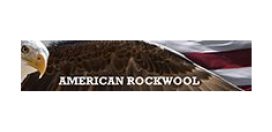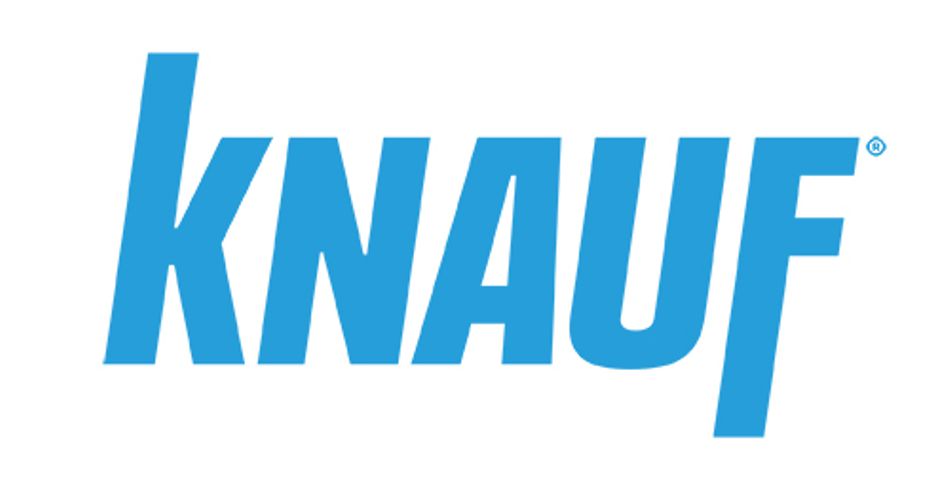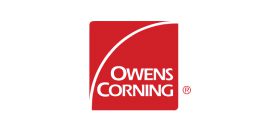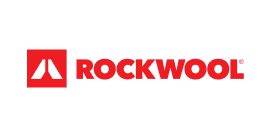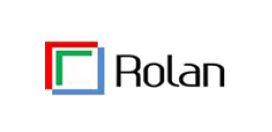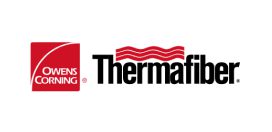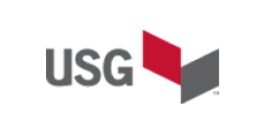Tips for Recruiting & Retaining Installers (N156)
–+How can insulation contractors improve their employee recruitment and retention efforts? Learn the latest insights on building industry recruitment and retention from new research and expert guidance from one of the nation’s top human resources marketing pros.
7 Advanced Framing Approaches with Fiberglass and Mineral Wool (N154)
–+Advanced framing means more than switching from 16” to 24” on center framing. Details like corners, wall intersections, and around windows are key to advanced framing success. This guide shows how to execute advanced framing and install proven effective fiberglass or mineral wool insulation for your projects.
Guide to Insulating Your Home Office (N139)
–+Insulating Your Home Office for Sound Control
With a growing number of people working from home, a dedicated home office is essential for productivity. Designing the space for noise control is important. Learn how simple actions like sealing cracks, adding sound-absorbing surfaces, and adding interior wall insulation can help.
10 Hidden Air Leaks in New Construction (N099)
–+Sealing common air leakage paths is key to achieving a tight thermal envelope. Often, hidden holes in new construction homes can make achieving an airtight envelope very difficult. Knowing where these hidden holes tend to occur can help builders avoid a massive air leakage issue.
Our 10 Hidden Air Leaks in New Construction Homes guide covers the most common areas where these holes occur and offers solutions to fix the holes during the construction process.
5 Priority Air Sealing Locations for New Homes – Video
–+As states adopt new, more stringent home energy efficiency codes, builders must ensure new homes are properly air sealed. However, not all joints and opening contribute equally to air leakage. With so much area to air seal, are there places you should prioritize? Builder Eddie Fort of PD & M Inc. General Contractors and Wayne Toler of Toler Insulation review the five strategic priorities for air sealing in new homes in this video.
5 Priority Air Sealing Locations – Webinar
–+All contractors need to be trained on how to help builders reach more stringent energy code and air sealing requirements. This webinar originally recorded for HERS Raters details the five priority air sealing locations in new homes and how sealing them can reduce a home’s air change rates.
5 Priority Air Sealing Locations for Energy Efficient Homes
–+Learn what are the top 5 priority air sealing locations for new construction, the stack effect and airtightness requirements builders should know for building energy efficient homes.
25 Checkpoints for Inspecting Insulation Jobs (BI497)
–+This laminated, pocket-sized card helps inspectors, builders and contractors easily determine if insulation is properly installed.
3E Plus Computer Program (CI219)
–+3E Plus computer program calculates heat loss/gain on hot or cold piping and equipment, and determines economic thickness of industrial insulation, providing payback and savings data as well as CO2 emission reduction data.
The latest version of 3E Plus (Version 4.1) features:
- Runs on Windows XP, Vista, and Windows 7
- All calculations involving money or economics, such as the Cost of Energy calculations are now in the ECONOMICS section.
- Able to retain user installed data when updating the program
- Simple payback calculations
- New user interface
- Automatically calculates thickness tables
- Improved report formats
- Calculates in both metric and inch-pound units
- Ability to add custom fuels
- Calculates multiple insulation layers
- Updated thermal curves and new insulation materials
A “How to Install Batt Insulation” Videos Series
–+Below are links to a three part video series showing the proper installation methods of fiberglass and rock wool batt insulation to meet RESNET Grade I requirements.
Helps to answer the question “How do I install batt insulation?”
- Video 1/3 – Pre-insulation Walk-Through
- Video 2/3 – Insulating Tips From the Pros
- Video 3/3 – Insulation Inspection
Brian Coble, Director of High Performance Homes for Advanced Energy walks viewers through an ENERGY STAR Home and points out every area of a home that must be insulated to meet RESNET Grade 1 Insulation Installation Requirements. Meeting specific energy efficiency criteria with fiberglass, rock wool and slag wool batt insulation can be easily achieved if the insulation and air sealing package is installed with professionalism and care. Additional energy efficiency measures that need to be performed prior to installing home insulation is also addressed.
A Guide to Insulated HVAC Systems (AH121)
–+Covers the basics of fibrous glass air duct insulation (ductboard / duct board), its role in thermal and acoustical performance, and how it can contribute to indoor air quality.
Discusses fibrous glass ducts, liner and wrap insulation for sheet metal duct systems, and insulated flexible ducts. Describes features and benefits of each type of system; includes job-site checklists for inspectors and code officials.
ASHRAE 90.1 Compliance for Metal Buildings (MB304)
–+Helps the metal building designer meet the energy code requirements with fiberglass insulation systems that will meet the ASHRAE 90.1 Standard.
The booklet highlights ASHRAE’s minimum U-Value requirements for 234 U.S. cities and includes detailed construction drawings for several types of fiberglass insulation systems for metal building construction.
Benefits of Mineral Wool as Continuous Insulation (N101)
–+This publication details the many benefits of using mineral wool as continuous insulation, including excellent fire performance, flixible installation and vapor permeability.
Building Insulation: A Performance Comparison (BI502)
–+Today’s home builder is striving to construct a home that will minimize the impact on the environment and provide comfort, convenience and cost savings for the home owner.
This piece compares the most common insulation selection criteria for fiberglass insulation, cellulose insulation, rock and slag wool insulation, cotton insulation and spray foam insulation. Comparison data includes information on thermal performance, fire safety, moisture absorption, settling, recycled content, product testing and more.
Cleaning Fibrous Glass Insulated Duct (Ductboard / Duct Board) Systems – Recommended Practices (AH122)
–+This manual shows duct cleaning contractors how to identify the different types of insulated air ducts, how to open each type for access by cleaning equipment and personnel, how to close and seal openings after cleaning.
Includes guidelines on determining when insulated ducts need to be cleaned, how to avoid damaging fibrous glass surfaces. Pre- and post-cleaning checklists are included. A helpful tool for the professional duct cleaning contractor.
Fabrication Dimensions for 2″ (R-8.7) Fibrous Glass Duct Board (Ductboard) (AH136)
–+This publication provides dimensional data required for accurate fabrication of insulated duct systems using 2″ (R-8.7) fibrous glass duct board.
Facts About Fiber Glass Insulation and Vapor Retarders (BI451)
–+This publication provides guidance on when and where to use vapor retarders when using fiberglass insulation.
Facts #11: Facts About Ventilation and Moisture Control (BI458)
–+Facts About Ventilation and Moisture Control – Includes information on attic ventilation, crawl space ventilation and vapor retarders.
Facts #15: Achieving Expected Thermal Performance (BI461)
–+Application of batts in high performance horizontal ceilings.
Facts #21: High-Performance Batts for Walls and Cathedral Ceilings Offer Energy and Money Saving Construction Alternatives (BI467)
–+This Fact Sheet looks at high-performance fiberglass batts, which can significantly improve the energy efficiency of walls and cathedral ceilings and achieve higher R-values without necessarily adding to the cost of building a home.
Facts #24: The Facts About Insulation And Air Infiltration (BI480)
–+Discusses the results of several studies which support the conclusion that insulation plays a very insignificant role in controlling air infiltration.
Facts #25: Glass Fiber Air Transmission Systems – The Benefits and Recommended Use of Fibrous Glass Duct Liner (AH106)
–+Addresses the performance characteristics, installation recommendations and locations where fibrous glass duct liner should not be used.
Facts #28: Facts About Lamination Process Control and Thickness Recovery After Lamination (MB308)
–+Provides recommendations for laminators to help metal building insulation meet the stated R-value after lamination.
The Facts About Mold Growth in Glass Fiber Insulated Air Transmission Systems (AH113)
–+Provides an overview of the fact about the potential for mold growth in fiberglass duct liners and duct board.
Includes recommended procedures for proper maintenance of air transmission systems.
Facts #36: Facts About Using Sealants in Fiberglass Air Handling Systems (AH125)
–+Discusses issues and considerations regarding the use of biocides and encapsulants during HVAC system cleaning and maintenance specifically where fiberglass air duct insulations are involved.
Facts #39: Facts About The Impact of Duct Cleaning on Internal Duct Insulation (AH127)
–+Discusses the results of a research project designed to determine the effectiveness of three common HVAC duct cleaning methods used to clean the duct insulation surface.
Facts #50: Glass Fiber Air Transmission Systems: The Facts About Airborne Fibers (AH114)
–+Summarizes the results of a number of studies conducted over a period of twenty-five years that show that glass fiber erosion from the airstream surface of fiberglass duct insulations is insignificant.
Facts #52: Glass Fiber Air Transmission Systems: Preventing Moisture Accumulation in Ducts (AH107)
–+Discusses sources of moisture in the home and provides information on ways to prevent water accumulation in ducts located in unconditioned spaces, the problems associated with moisture accumulation, and the means of prevention.
Facts #70 – Fiberglass Building Insulation Products: The Facts About Mold Growth (BI483)
–+Discusses the facts about fiberglass building insulation products and mold. Provides recommendations on remediating wet fiberglass insulation, and dispels myth about so-called mold-resistant products.
Facts #72: Mineral Fiber Insulation Products for Commercial and Industrial Applications: The Facts About Mold Growth (CI217)
–+Contains recommendations regarding moisture issues with mineral fiber pipe insulation for commercial and industrial applications.
Facts #78: Exposure Data For Fiberglass, Rock Wool & Slag Wool (N062)
–+This document helps contractors and workers determine the level of potential exposure to fiberglass, rock and slag wool fibers for particular work tasks.
Facts #79: DOE Releases New R-Value Recommendations (BI491)
–+This is a Fact Sheet with suggestions of where to insulate your home and the DOE R-value recommendation to obtain maximum thermal efficiency and comfort.
Facts #8: ASTM Standard Specifications for Mineral Fiber Blanket, Loose-fill and Spray-Applied Insulation (BI455)
–+Reviews ASTM Standard Specifications and performance requirements for mineral fiber blanket, loose-fill, and spray-applied insulation materials.
Facts #9: Facts About Fiberglass Loose-Fill Insulation (BI456)
–+Reviews performance, material, installation, inspection and R-value information with regard to fiberglass loose-fill insulation.
Fiberglass and Mineral Wool Insulation as an Alternative to Sprinkler Systems (BI504)
–+This guide details how fiberglass and mineral wool insulation can be used as an alternative to sprinkler systems in concealed spaces and ceiling cavities in low-rise occupancy buildings and one- and two-family dwellings.
Fiberglass Duct Board Fabrication Instructional Training Series DVD (AH148)
–+This 2 1/2 hour DVD demonstrates step by step fabrication of fiberglass duct board.
Excellent supplement to NAIMA’s Fibrous Glass Duct Construction Standards Manual
Available as a DVD (click here to order)
Each of the 22 NAIMA duct board fabrication training segments are also now available to view online in NAIMA’s video library.
Learn from the Pro’s as NAIMA’s FabricationTrainers take you through Tools & Materials, Hand Fabrication, Machine Grooving, Grooving Machine Maintenance, Closure Systems, and Fitting Fabrication.
Information is provided in easy to view and review chapter segments.
2 hours and 30 minutes of total training time.
Each of the 22 NAIMA duct board fabrication training segments are also now available online via NAIMA’s video library.
Fiberglass HVAC Insulation – Know the Facts (12 Minute Presentation)
–+12 minute audio visual presentation on fiberglass insulation products designed for the HVAC system for residential and commercial buildings.
The presentation focuses on:
- The Benefits of Insulated Air Ducts
- Health & Safety Safety
- Mold Moisture & Cleanability
- Performance & Product Testing
- Codes & Standards
Fibrous Glass Duct Board (Ductboard) White Paper (AH142)
–+This white paper is intended to increase knowledge of using fibrous glass duct board in common residential HVAC applications.
Fibrous Glass Duct Construction Standards (Fifth Edition) (AH116)
–+Includes comprehensive instructions on how to fabricate and install fibrous glass duct systems (ductboard), including duct board systems with flex duct.
This illustrated handbook depicts methods of constructing simple straight duct sections plus tees, elbows and complex fittings, installing accessories, connecting ducts to HVAC equipment. Outlines UL 181A approved closure systems, recommended methods of reinforcement, support, and damage repair. Includes a detailed job inspection checklist. (Designed for use in conjunction with the DVD: “Duct Board Fabrication Concepts“.)
Fibrous Glass Duct Liner Standard (AH124)
–+This standard provides comprehensive and detailed information regarding the materials, accessories, specification, fabrication, installation, commissioning, maintenance and service life of fibrous glass duct liners.
Includes numerous informative illustrations. Third Edition, 2002.
Fibrous Glass HVAC Duct Systems Proven Performance (AH100)
–+Reviews the benefits of and provides information on the broad range of proven performance characteristics of fibrous glass duct systems for both commercial and residential buildings. Includes duct board (ductboard), duct wrap, and duct liner.
Glass Fiber Air Transmission Systems: Cleaning Fibrous Glass or Lined Sheet Metal Ducts (AH112)
–+Information on cleaning, sanitizing and sealing fiberglass and fiberglass lined ducts.
Grade I Insulation Installation: Why Builders Should Care (N085)
–+There can be a dramatic impact on a home’s HERS rating if insulation installation is less than Grade I. This publication gives estimates by climate zone for Grade III installation and details why quality insulation matters, and what builders, HERS raters and contractors can do to ensure Grade I installation every time.
Guide to Conducting a Short Form Insulation Audit (CI206)
–+Preliminary tool to explain the impact of adding or upgrading thermal insulation.
Kit includes easy-to-follow instructions, sample worksheets and audit forms for conducting an industry insulation audit.
How to Install Insulation: Video Series from California Energy Commission
–+NAIMA has worked with the California Energy Commission to produce the following “How To” videos for insulating ceilings and walls with fiberglass insulation.
Introduction to Constructing Residential Buildings in Flood-Prone Areas in Houston and Harris County, TX (N094)
–+This quick reference guide provides a summary of the requirements for constructing a home within the flood-prone areas of the city of Houston and Harris County, Texas with minimum restrictions on insulation materials. The guide also addresses elevation requirements and foundation options.
Key Checkpoints for Inspecting Insulation Jobs (NCA102 )
–+This easy-to-laminate, pocket-sized card helps Canadian inspectors, builders and contractors easily determine if insulation is properly installed in walls, ceilings and floors and provides guidance on air sealing, insulating around combustible sources and more.
LEED for Homes Rating System (N065)
–+Credit Opportunities for Fiberglass, Rock and Slag Wool Insulation Products.
This reference guide alerts the building team to potential LEED credits where fiberglass, rock and slag wool insulation may be able to contribute in qualifying for specific LEED for Homes Rating System points and credits as well as prerequisites. The guide provides descriptions to help building team members understand relevance to points and credit.
LEED® 2009 NC – New Construction and Major Renovations (N064)
–+Credit Opportunities for Fiberglass, Rock and Slag Wool Insulation Products.
This reference guide alerts the building team to potential LEED credits where fiberglass, rock and slag wool insulation may be able to contribute in qualifying for specific LEED points and credits as well as prerequisites in the categories of Energy and Atmosphere, Materials and Resources, Indoor Environmental Quality and Innovation and Design.
Let’s Set the Record Straight (BI500)
–+This publication addresses independent research studies that demonstrate that the most effective thermal envelope system requires insulation and also a caulk, foam, taped building wrap, foam sheathing and/or gasket material to stop air movement through and around the external walls.
Provides details on the following issues:
- Insulation, of any type, is no substitute for proper sealing and prevention of air infiltration.
- “Skimming” the wall cavity with spray applied insulation is not enough to stop all air infiltration
- Maximizing home insulation and minimizing air infiltration are two separate issues.
- Spray foam insulation is not a one step solution to air leakage.
- R-value is not a gauge for air infiltration.
Maximum Thickness Restrictions for Spray Foam (RP067)
–+This article contains a detailed explanation of thickness restrictions for spray foam insulation.
The reader will also learn about spontaneous combustion and “advice to prudent builders”. Reprint from Energy Design Update April 2008
NAIMA 202® (Revised 2022) Standard for Flexible Fiber Glass insulation to be Laminated for Use in Metal Buildings (MB311)
–+NAIMA metal building insulation manufacturers subscribe to this voluntary standard for flexible fiberglass insulations to assure the R-value is maintained after lamination.
The voluntary standard is a valuable product specification tool for manufacturers, designers and users of metal building insulation systems.
NAIMA Fibrous Glass Duct Construction Standards Inspection Checklist (AH102)
–+An inspection checklist for fibrous glass duct board system installation.
Pictorial Guide on Installing Batt Insulation — Installation Tech Tips
–+Homes insulated with fiberglass or rock wool batt insulation can meet the RESNET Grade 1 installation requirements by fitting and filling all cavities, and carefully insulating all around obstacles such as electrical boxes, recessed lighting, wires and cables, piping, exhaust fans and duct connectors. This pictorial guide shows insulating tips on cutting and fitting insulation batts into places like under stairways, around fireplaces, tubs and showers, and band joists and how to check for compression, gaps, voids or misalignments and more.
Pictorial Guide on Installing Batt Insulation — The Critical Details
–+Insulating homes to the latest energy codes requires care and attention to detail to maximize efficiency and year round comfort. See how professionals insulate attic hatches, ceilings with and without attics, roof decks, around ventilation baffles and chutes, floors and knee walls with fiberglass and rock wool batt insulation.
Play it Smart, Play it Safe (Spanish) VHS (N029)
–+Este video de 15 minutos es un entrenamiento que contiene información importante y divertido para obreros que se ocupan de los productos de aislamiento fibrosos.
El video ofrece dos instaladores de aislamiento que acaban de jugar baloncesto en su jeugo semanal.
Recomendaciones Para Instalacion en Construcciones Residenciales y Otras de Entramado Liviano (Aislamiento de Fibra de Vidrio de Relleno Suelto) (BI403SP)
–+Includes information on ceiling installation guidelines, sidewall installation guidelines and material specifications.
This booklet was reviewed by the Insulation Contractors Association of America (ICAA).
Recomendaciones Para Instalacion en Construcciones Residenciales y Otras de Entramado Liviano (Aislamiento de Fibra de Vidrio para Edificios) (BI402SP)
–+Includes information on fiberglass batt insulation, where it is installed, labeling procedures, vapor retarders, and recommended clothing and equipment.
This booklet was reviewed by the Insulation Contractors Association of America (ICAA).
Recommendations for Installing Fiberglass Insulation in Metal Buildings (MB316)
–+This 8 page guide provides detailed information on NAIMA 202-96(R) (Rev.2000) Fiberglass Insulation for Metal Buildings.
Installers will learn about NAIMA 202-96 insulation, how to recognize it, store it, install it and the benefits it brings to buildings.
Recommendations for Installing Insulation in Residential and Other Light-Frame Construction (Fiberglass Home Insulation) (BI402)
–+Includes information on fiberglass, rock wool and slag wool batt insulation, where it is installed, labeling procedures, vapor retarders, and recommended clothing and equipment.
This booklet was reviewed by the Insulation Contractors Association of America (ICAA).
Recommendations for Installing Insulation in Residential and Other Light-Frame Construction (Fiberglass Loose-Fill Insulation) (BI403)
–+Includes information on installing insulation including ceiling installation guidelines, sidewall installation guidelines and material specifications.
This booklet was reviewed by the Insulation Contractors Association of America (ICAA).
Requirements for Listing UL 181A Closure Systems (AH105)
–+Describes the rigorous UL 181A tests that tapes with the Underwriters Laboratories (UL) label undergo to ensure proper fiberglass duct closure.
Residential Buildings in Flood-Prone Areas in Houston and Harris County, TX
–+This TechNote features solutions that maximize the flexibility in material choices, such as insulation products, for construction of the elevated conditioned space in Houston and Harris County, TX.
Tech Notes: Duct Insulation – Do it Right the First Time (AH147)
–+Discusses the proper way to install duct insulation to avoid problems, control condensation and meet code requirements.
The Truth About Air Infiltration (BI499)
–+This brochure breaks down the myth that air infiltration and thermal protection are the same and can be treated with one solution.
Because a home should be thought of as a combination of integrated systems, optimal thermal protection for a home comes with proper air sealing and insulation.

